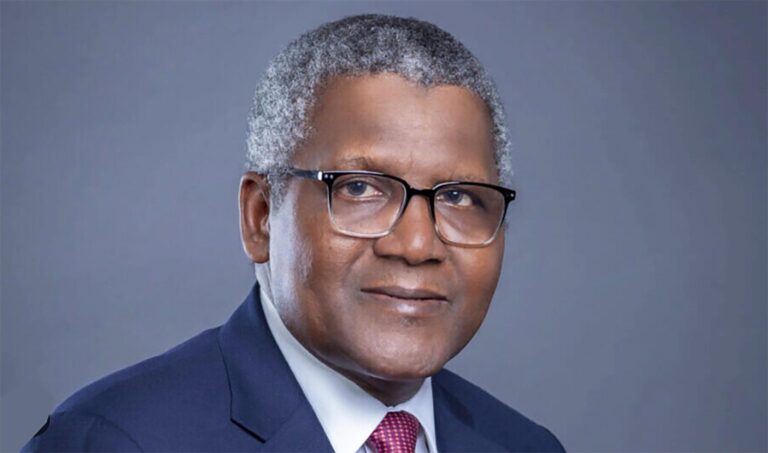Conducive climate and renewable energy supply and utilisation can co-exist in a complementary and sustainable manner in Africa. For this to happen, many key issues need to come under focus. First, Africa must evolve policies that address both issues simultaneously as a two-way traffic. The interwoven issues, requisite trade-off and changing socio-political milieu will have to be put in the right and proper contexts.
Adnan Z. Amin, in the International Renewable Energy Agency’s Renewable Energy Roadmap, wrote that “Africa faces an enormous energy challenge. Its growing population and economic progress has sent energy demand soaring. This calls for a rapid increase in supply on the continent, to which all forms of energy must contribute in the decades ahead.” One of the areas, across Africa, in which Amin’s comments find eloquent expression is the mobile phone revolution, serving diverse functions and forcing millions of poor Africans to demand for electricity. Other forms of portable devices requiring recurring use of electricity are now springing up.
Although Amin acknowledged that Africa is richly endowed with fossil-based and renewable energy sources, he warned that “a continued reliance on oil and gas along with traditional biomass combustion for energy will bring considerable social, economic and environmental constraints.” Reasoning rather that “Africa therefore has a unique opportunity to pursue sustainable energy development as a basis for long-term prosperity,” he urged “firm commitment to the accelerated use of modern renewable energy sources” as part of efforts toward tackling today’s energy challenge on the continent.
Over a billion people around the world lack access to electricity; most of them are in sub-Saharan Africa and South Asia. In reality, less than 20 per cent of the population in Africa have access to electricity – a situation that is much worse in rural areas where fewer than five per cent are connected to the grid. Africa can deploy modern renewables to eliminate power shortages, bring electricity and development opportunities to rural villages that have never enjoyed those benefits, spur on industrial growth, create entrepreneurs, and support increased prosperity across the continent.
Africa’s largest infrastructure deficit is to be found in the power sector. As observed by the World Bank, the power generated in all the 48 countries of Sub-Saharan Africa, with a combined population of more than 750 million, is roughly the same as for Spain, a single European country of less than 50 million people. Africa therefore urgently needs power supply that is accessible to everyone, and can be actualised through appropriate investment and political commitment to connect every corner of the continent, even though the power grid appears too late now with the ascendancy of solar power. The alternative that Africa needs now should be cheap, easy to deploy, decentralised and effective enough to provide electricity to millions of people in the shortest possible time. Solar power is thus the option that stands out here.
Modern renewables can thus facilitate a cost-effective transformation to a cleaner and more secure power sector. Foremost in this effort are Egypt, Ethiopia, Kenya, Morocco and South Africa. Some other smaller African countries, including Cape Verde, Djibouti, Rwanda and Swaziland have also set ambitious renewable energy targets. Others are following suit, and renewable energy is on the rise across the continent.
For its ubiquity, the solar energy comes in handy. Africa is located around the equator. With an average of 325 days of bright sunlight every year, solar power remains one of Africa’s most abundant but scarcely used resources. According to the latest Global Solar Demand Monitor from GTM Research, installations will reach 104 gigawatts this year, representing 6 percent annual growth. After that, annual installations will easily exceed the 100-gigawatt milestone through at least 2022. Installations in China, which reached 53 gigawatts in 2017, is expected to fall to 48 gigawatts in 2018. Despite the decline, China alone is still reckoned as accounting for 47 per cent of global demand this year.
The analysis by GTM Research stated that, in Europe, this year will see the re-emergence of Spain while France will firmly establish itself as one of Europe’s top three largest markets. Egypt and Brazil are projected to become gigawatt-scale markets for the first time in 2018. Africa’s mention in this analysis was within the reference to Middle East and North Africa, under which Egypt was classified. As costs decline, wind and solar are becoming increasingly comparable to new-build fossil fuel alternatives in a growing number of countries. China remains the dominant player, but India is increasingly moving to the centre stage. Government policies are introducing more competition through renewable auctions, further reducing costs.
A publication on Renewables 2017, Market Report Series: In 2018, revealed that Latin America will add 5.6 gigawatts and the Middle East and North Africa region will add 4.7 gigawatts, representing explosive year-over-year growth of 61 per cent and 281 per cent, respectively. The global solar PV market will add over 100 gigawatts of capacity for the first time in 2018. Today, solar panels are a mass market product, spreading across the rooftops of superstores and suburban homes and blossoming in huge fields from California to Mongolia. In Africa, its deployment needs far more capital than existing sources can provide, and institutional investors are promising targets.
Varun Sivaram, in his new book, Taming the Sun, attempted a road map to lead the solar energy industry to its brightest future. He also warned that solar could hit a dead end, with flawed technology limiting its growth. Sivaram’s argument was that the solar industry has boomed in the past decade as a result of widespread government support and plunging costs that have made it competitive against fossil fuels. “That progress has been made possible not by a technological breakthrough — silicon cells have been in use since the 1950s — but by high-volume manufacturing, especially in China, that has created economies of scale.”
He expressed fears that, by the 2030s, those silicon panels could be hitting their economic and technical limits, having meanwhile choked off more sophisticated rival technologies. His solution therefore is innovation: in electricity grids, in financial structures, and in solar technology. Sivaram wrote that “the US government’s first priority should be to dramatically boost funding for applied R&D into breakthrough solar technologies.”
The growth trend is worth our attention. The Global Solar Demand Monitor posited that the 81 gigawatts expected in 2017 were more than double the amount of solar capacity installed in 2014. And it was 32 times more solar deployed a decade ago. In the year 2000, global installations totalled 150 megawatts. By 2022, global capacity is projected to reach 871 gigawatts; that is about 43 gigawatts more than expected cumulative wind installs by that date. And it’s more than double today’s nuclear capacity.
According to the African Development Bank (AfDB), manufacturers in sub-Saharan Africa experience an average of 56 days of shutdown time per year due to power outages. Fossil fuel-based power generation is the most expensive form of energy globally, yet it is the largest source of electricity generation in Africa. A significant portion of electricity generated on our continent is from non-renewable sources like petrol, natural gas, coal and other fossil fuels. These fuels remain expensive and have dangerous effects on our health, the environment and climate.
One piece runs thus: “One of the core challenges as African countries continue to grow and develop is energy: meeting rising demand for power, transport and other uses in a way that is economically sustainable and safeguards livelihoods. Economic growth, changing lifestyles and the need for reliable modern energy access is expected to require energy supply to be at least doubled by 2030. For electricity it might even have to triple. Africa is richly endowed with renewable energy sources, and the time is right for sound planning to ensure the right energy mix. Decisions made today will shape the continent’s energy use of decades to come.”
This transformation would require on average $70 billion per year of investment between 2015 and 2030. “Whilst the power sector is the most visible candidate for an energy transformation, opportunities in the heating and transport sectors are also significant. A complete overhaul of Africa’s energy supply is long overdue. But this will require increased renewable energy penetration across the three sectors, and would provide enormous socio-economic benefits.”
Thus far, African leaders may be seeing the opportunities that renewable energies present for their nations. Policies are therefore needed to induce private capital, including public-private partnerships, to share costs and risks, and to build capacity in local financial sectors to increase access to loans and other forms of financing. Recently, Google invested $12 million in the South Africa’s Jasper Power Plant, a solar project planned to supply nearly 100 Mega Watts of clean energy to the country.
At the heart of solar power is sustainability; and Sivaram, in his new book, seems to be making a strong case for sustainability in the solar business. How to strike a delicate balance between power generation,as well as utilisation on one hand and keeping our environment safe and sustainable in the future on the other hand remains a huge and recurring challenges that must be faced up to now. This must weave knowledge, investment and continual adjustments into a robust plan that is both proactive and responsive. Africa can only hope to find and keep its rightful place in the emerging economy of now and the future if it has its energy supply and utilisation under control while also making the environment worth a living.








